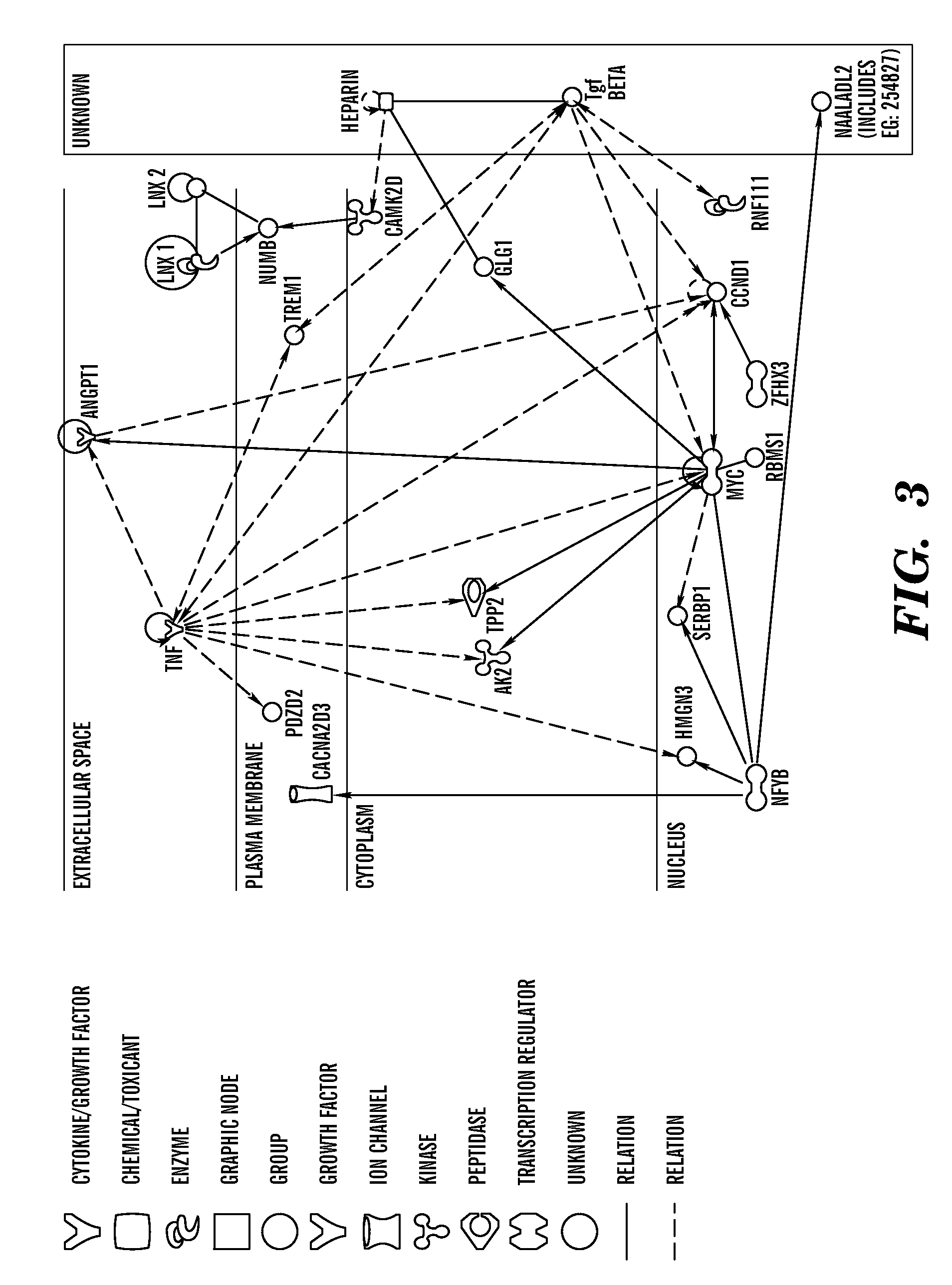Diagnosis and treatment of kawasaki disease
a kawasaki disease and kawasaki technology, applied in the field of kawasaki disease diagnosis and treatment, can solve the problems of no diagnostic test and effective treatment, unable to accurately and timely diagnose and develop optimal management strategies, and evoke a markedly abnormal immunological inflammation response in genetically susceptible individuals
- Summary
- Abstract
- Description
- Claims
- Application Information
AI Technical Summary
Benefits of technology
Problems solved by technology
Method used
Image
Examples
example 1
Materials and Methods: Study Design
[0520]We used a staged study design, performing the initial genome-wide association analyses in a Dutch Caucasian case-control sample and re-testing the most significantly associated SNPs and haplotypes in an independent sample of Kawasaki Disease trios from Australia, the US and the UK, using a different genotyping technology.
example 2
Materials and Methods: Phenotypic Definition and Case Ascertainment
[0521]KD shares many features of other infectious diseases of young children, including fever, rash and changes to the mucous membranes. There is no diagnostic test and laboratory parameters individually have insufficient sensitivity or specificity for diagnosis.2
[0522]In all study cohorts we employed a conservative and widely accepted Kawasaki Disease case definition in an attempt to maximize phenotypic homogeneity and diagnostic specificity. Kawasaki Disease is defined by the presence of prolonged fever, together with at least four of the five classical diagnostic criteria.13 Children with at least five days of fever and two diagnostic criteria with echocardiographic changes of coronary artery damage during the acute and / or convalescent phases of Kawasaki Disease are also included, as these coronary artery manifestations are likely pathognomonic for Kawasaki Disease.13 Cases of incomplete Kawasaki Disease, for who...
example 3
Materials and Methods: Subjects
[0524]The initial GWAS is performed on 119 Dutch Caucasian Kawasaki Disease cases and 135 healthy controls. The cases are identified by collaborating pediatricians and sent for cardiological evaluation during the acute stage and subsequent follow-up to the AMC. The controls are unrelated adult Caucasian blood donors residing in the same geographical area. Ethnicity is determined by self or parental ethnic identification. Assessment for possible population stratification is performed with Eigenstrat.15 A second independent cohort, which consisted of 583 Kawasaki Disease-affected families, including complete and incomplete trios, from Australia, the US and the UK, is used to verify the most significantly associated variants identified in the GWAS. Family Kawasaki Disease cases in each country are identified from pediatric hospital databases, through Kawasaki Disease parent support groups and through media releases. Biological parents (where available) an...
PUM
| Property | Measurement | Unit |
|---|---|---|
| real time polymerase chain reaction | aaaaa | aaaaa |
Abstract
Description
Claims
Application Information
 Login to View More
Login to View More - R&D
- Intellectual Property
- Life Sciences
- Materials
- Tech Scout
- Unparalleled Data Quality
- Higher Quality Content
- 60% Fewer Hallucinations
Browse by: Latest US Patents, China's latest patents, Technical Efficacy Thesaurus, Application Domain, Technology Topic, Popular Technical Reports.
© 2025 PatSnap. All rights reserved.Legal|Privacy policy|Modern Slavery Act Transparency Statement|Sitemap|About US| Contact US: help@patsnap.com



